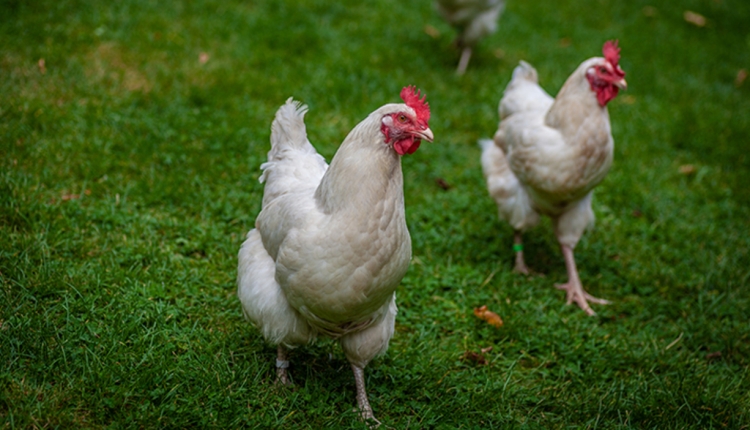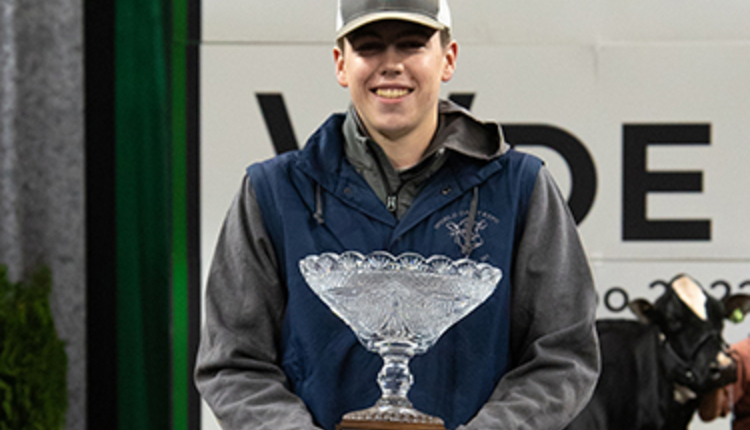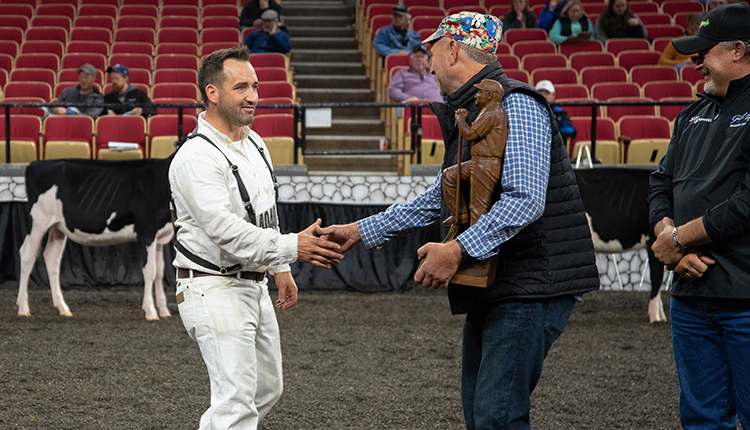Over 600 people came to Knigge Farms of Omro, Wis., to celebrate the 10th anniversary of robotic milking in the United States. It was in August 2000 that Pete and Theo Knigge, and their son, Charlie, installed a pair of A2, Astronaut robots in their new free stall barn. This May, just three months short of the 10-year anniversary, the Knigges installed the latest Lely robots, the Astronaut A3.

Pete Langebeeke, President of Lely USA presenting a plaque honoring the 10th anniversary
of robotic milking in the US to Pete, Theo and Charlie Knigge.
The Knigges told those in attendance that the new robots have some great improvements. Their modernistic design covers more of the working parts which reduces the potential for hoses and other components to get moved by cows as they are milked. The improved connection software makes for quicker milking machine attachment which has led to fewer milking failures. When a milking failure occurs, the Knigges must bring the cows up to the robot.
Another recent change to the Knigge operation is the addition of Juno which is a robotic feed pusher. On Knigge's farm, they set it up to push up feed every two hours. Since setting the system up a month ago, milk production has gone from 85 pounds per day to 94 pounds.
On average, cows are being milk three times a day. The highest-producing cow which is milking 140 pounds per day is going into the robot six times. In addition to a TMR, cows get a sweet grain mix to entice them to come into the robot. The average cow gets 9.5 pounds of that grain each day. The herd's TMR mix consists of first-crop haylage, 40.5 pounds at 36 percent dry matter (DM); corn silage, 34 pounds, 37 percent DM; high-moisture shell corn, 13.50 pounds, 67.5 dry matter; cottonseed, 5 pounds, 88 percent DM; protein mix, 2.5 pounds, 92 percent DM; third-crop hay, 2 pounds, 88 DM; and a mineral mix, .74 pounds; 95 percent DM.
One improvement the Knigges would like to see is a downward trend on their SCC which has gone up this summer. It now stands at 325 SCC. There are quite a few robotic herds that are under 200 SCC.

of robotic milking in the US to Pete, Theo and Charlie Knigge.
The Knigges told those in attendance that the new robots have some great improvements. Their modernistic design covers more of the working parts which reduces the potential for hoses and other components to get moved by cows as they are milked. The improved connection software makes for quicker milking machine attachment which has led to fewer milking failures. When a milking failure occurs, the Knigges must bring the cows up to the robot.
Another recent change to the Knigge operation is the addition of Juno which is a robotic feed pusher. On Knigge's farm, they set it up to push up feed every two hours. Since setting the system up a month ago, milk production has gone from 85 pounds per day to 94 pounds.
On average, cows are being milk three times a day. The highest-producing cow which is milking 140 pounds per day is going into the robot six times. In addition to a TMR, cows get a sweet grain mix to entice them to come into the robot. The average cow gets 9.5 pounds of that grain each day. The herd's TMR mix consists of first-crop haylage, 40.5 pounds at 36 percent dry matter (DM); corn silage, 34 pounds, 37 percent DM; high-moisture shell corn, 13.50 pounds, 67.5 dry matter; cottonseed, 5 pounds, 88 percent DM; protein mix, 2.5 pounds, 92 percent DM; third-crop hay, 2 pounds, 88 DM; and a mineral mix, .74 pounds; 95 percent DM.
One improvement the Knigges would like to see is a downward trend on their SCC which has gone up this summer. It now stands at 325 SCC. There are quite a few robotic herds that are under 200 SCC.









